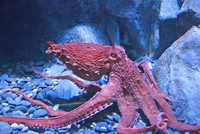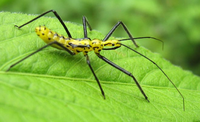Difference between revisions of "Taxonomy"
| Line 8: | Line 8: | ||
===Examples=== | ===Examples=== | ||
| + | |||
| + | ====Vertebrates and Invertebrates==== | ||
| + | {| class="wikitable" | ||
| + | |- | ||
| + | |[[File:Snail.png|center|200px]] | ||
| + | |[[File:Worm.png|center|200px]] | ||
| + | |[[File:Octopus.png|center|200px]] | ||
| + | |[[File:Insect.png|center|200px]] | ||
| + | |- | ||
| + | |These are all examples of invertebrates. | ||
| + | |} | ||
| + | |||
Invertebrates: | Invertebrates: | ||
Snail, Worm, Octopus, Insect, Arachnid | Snail, Worm, Octopus, Insect, Arachnid | ||
Revision as of 07:32, 17 August 2018
Contents
Key Stage 2
Meaning
Grouping living things is done to make it easier to identify different creatures.
About Grouping Living Things
- Living things can be grouped in different ways.
- Scientists usually group things by common features or common behaviour.
Examples
Vertebrates and Invertebrates
| These are all examples of invertebrates. |
Invertebrates: Snail, Worm, Octopus, Insect, Arachnid
Vertebrates Reptile, Mammal, Bird, Fish, Amphibian.


